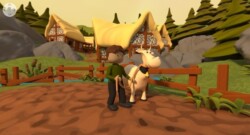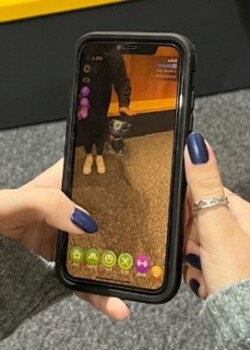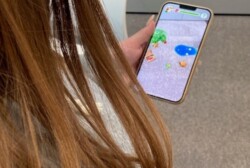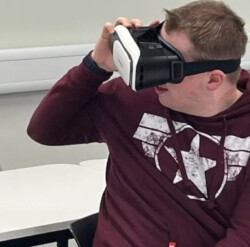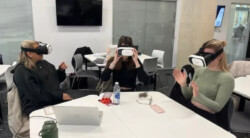Extended Reality (XR) in Primary Education
Date 8 January 2024
8.01.2024Simon Chapman and Devon Rossetti, Senior Lecturers in Education at the University of Northampton, investigate the integration of new digital technologies including Extended Reality (XR) tools in teaching and learning.
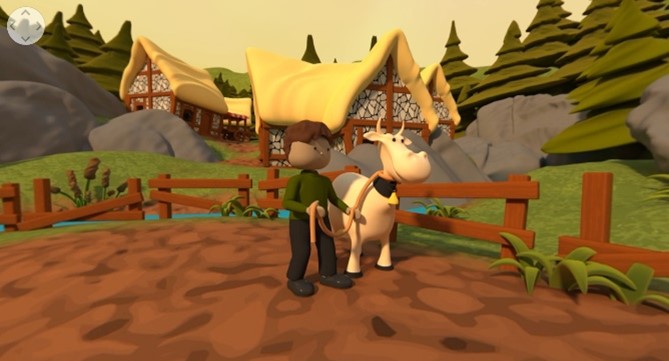
An aim of the University of Northampton’s BA Primary Education (5-11) Initial Teacher Training course is to develop creative and innovative primary school teachers of the future. One of the most promising advancements in teaching and learning in recent times is the integration of new digital technologies including Extended Reality (XR) tools.
These tools have garnered attention for their wide-ranging benefits including: providing immersive experiences of previously unimaginable, otherwise not accessible, real-world environments or artefacts (Merchant et al., 2014; Pirker and Dengel, 2021); promoting active learning, increasing motivation and developing emotional skills (Timovski et al., 2020); allowing users to experience feelings in situations physically out of reach, adding increased engagement (Freina and Ott, 2015) whilst increasing intrinsic motivation in learning (Kavanagh et al., 2017). It is essential we provide trainees with opportunities to develop their understanding of how to use these tools within their own teaching practice to enhance learners’ experiences and support a new generation of digital learners.
In a recent Learning Event to final year trainees focussing on the implementation of digital technologies, trainees discussed definitions of Virtual Reality (VR) and Augmented Reality (AR) before exploring different VR and AR resources and how they could be used to enhance teaching and learning across different subjects of the Primary National Curriculum (Department for Education, 2013).
In terms of VR, trainees explored both immersive (with headsets) and non-immersive (touchscreen) resources ranging from the Seymour and Lehrn online platform where trainees could walk through Victorian streets, visit Ancient Egyptian pyramids and listen to the re-telling of traditional tales such as Jack and the Beanstalk, to the use of YouTube VR where trainees experienced being on a rollercoaster, a Tsunami or deep sea diving.
A range of AR apps were also explored including AR Dragon where users can look after and train a pet dragon – something which could be used within Personal, Social, Health and Economic (PSHE) or Relationship and Sexuality Education (RSE); solAR exploration app where users can visualise how planets, moons and the sun orbit one another – which could be used within the teaching of Science; and My Very Hungry Caterpillar AR which re-tells the well-known story through interacting with the caterpillar in the users environment – another way to consider storytelling in English.
On using the resources, one trainee stated that they found them to be ‘really engaging’ and that they could ‘see the positives of their use in the classroom’ yet they would need to ‘seriously consider their own behaviour management strategies’ when implementing them. Another trainee noted how they felt the resources were advantageous because ‘they allow children to experience things that they might not be able to go and visit themselves physically due to time or cost.’ A final trainee noted how as practitioners, ‘it is our responsibility to learn how to use these tools and teach future generations how to utilise them as they are used in everyday life and will only continue to evolve so we must develop their digital literacy.’ All these themes, both advantages and limitations, are considered within a developing literature base in the field of XR in primary education.
As next steps, our Year 3 trainees will soon be conducting their final school-based training placements and will be embedding some of these resources into their own practice, discussing their use with their mentors and reflecting upon their effectiveness from both a cross curricular perspective and within the teaching of computing itself.
Devon Rossetti and Simon Chapman, Senior Lecturers in Education


References
- Department for Education (2013) National Curriculum in England: primary curriculum. GOV.UK [online]. Available from: https://www.gov.uk/government/publications/national-curriculum-in-england-primary-curriculum.
- Freina L., and Ott, M. (2015) A literature review on immersive virtual reality in education: State of the art and perspectives. The international scientific conference e-learning and software for education. 1(133), pp.1000–1007.
- Kavanagh, S., Luxton-Reilly, A., Wuensche, B., and Plimmer, B. (2017) A systematic review of Virtual Reality in education. Themes in Science and Technology Education.10(2), pp. 85–119.
- Merchant, Z., Goetz, E., Keeney-Kennicutt, W., Kwok, O., and Cifuentes, L. (2014) The learner characteristics, features of desktop £D virtual reality environments, and college students’ science learning. Journal of Educational Technology. 45(6), pp.1083-1095.
- Pirker, J., and Dengel, A. (2021) The Potential of 360° Virtual Reality Videos and Real VR for Education-A Literature Review. 41. IEEE [online].
- Timovski, R., Koceska, N., and Koceski, S. (2020) Review: the use of Augmented and Virtual Reality in Education. International Conference on Information Technology and Development in Education. Serbia, 2020.

